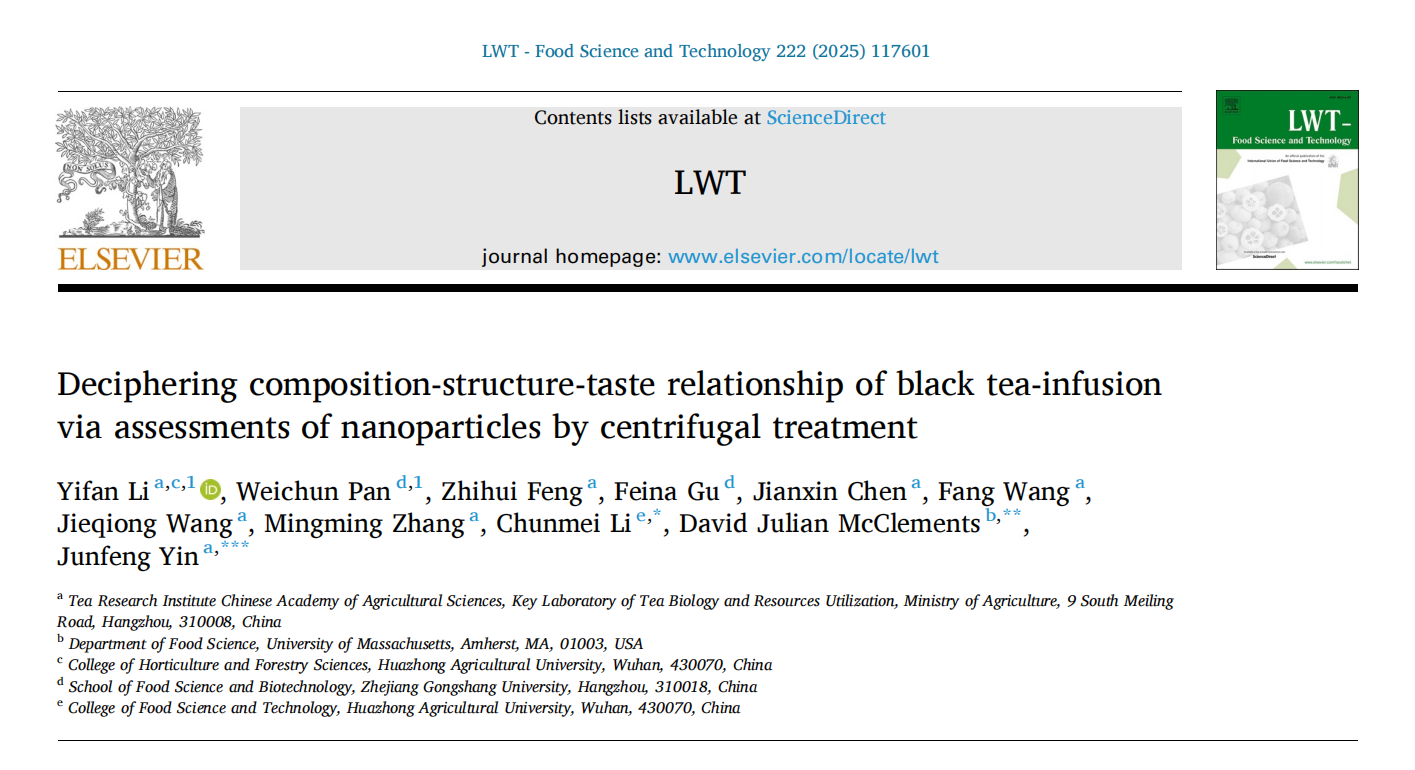
英文摘要
Keemun tea infusion was selected as a model system under various centrifugation speeds to build a relationship among chemical composition, properties of nanoparticles in tea infusion (Tea-NPs), and tea tastes via chemical analyses, sensory evaluation, and light scattering techniques. The research results showed that the hydrodynamic radius (Rh) of the Tea-NPs in the black tea infusion ranged from 100 to 250 nm, with a negative charge (-10 to -13 mV). The gyration radius (Rg) and zeta-potential assessments elucidated that Tea-NPs underwent structural modifications, which altered their size, shape, and compactness. High-speed centrifugation caused the dissolution of components such as polysaccharides in the Tea-NPs, and changes in the particle compactness and aggregation altered the structure of the Tea-NPs, resulting in an increase in Rh, while reducing the bitterness and enhancing the overall flavor of the tea infusion. This study highlights the important role of Tea-NPs in tea quality evaluation and their potential to drive innovative methods for improving tea product quality.
代表性图片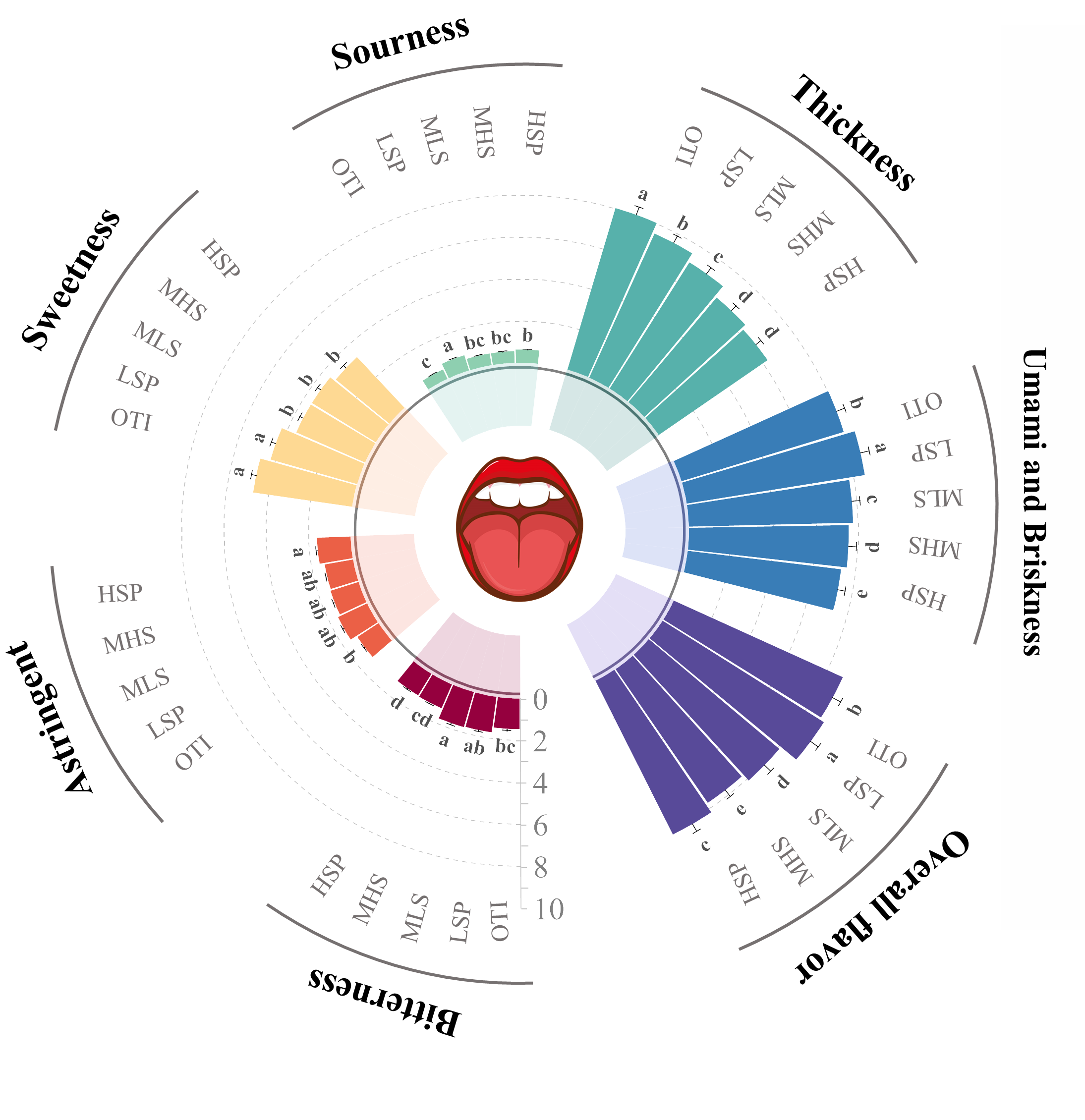
▲ 对经过不同离心预处理的茶浸液进行感官分析,得分越高,风味属性越强

▲ 离心速度对茶汤化学成分的影响:(A)pH值和总溶解固体;(B)总可溶性固形物;(C) 蛋白质;(D) 多糖;(E) 茶多酚;(F) 游离氨基酸。每一列上方的a-e不同字母表示显著差异(p≤0.05)
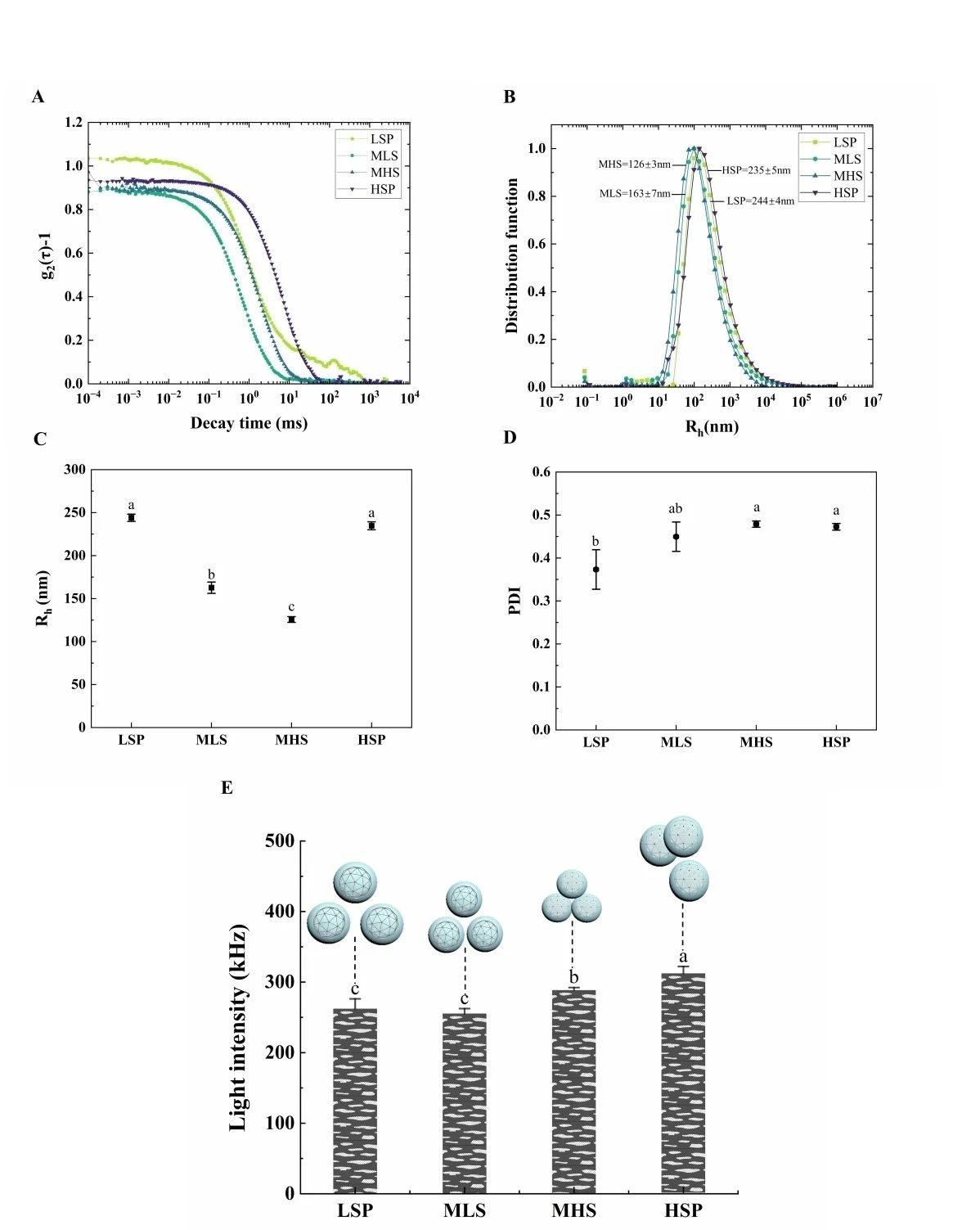
▲离心速度对茶汤中纳米颗粒的影响:(A)通过动态光散射确定的相关函数;(B)粒径分布;(C) 水力学半径(R**h);(D) PDI和(E)散射光强度与测量时间的关系。每一列上方的a-c不同字母表示显著差异(p≤0.05)
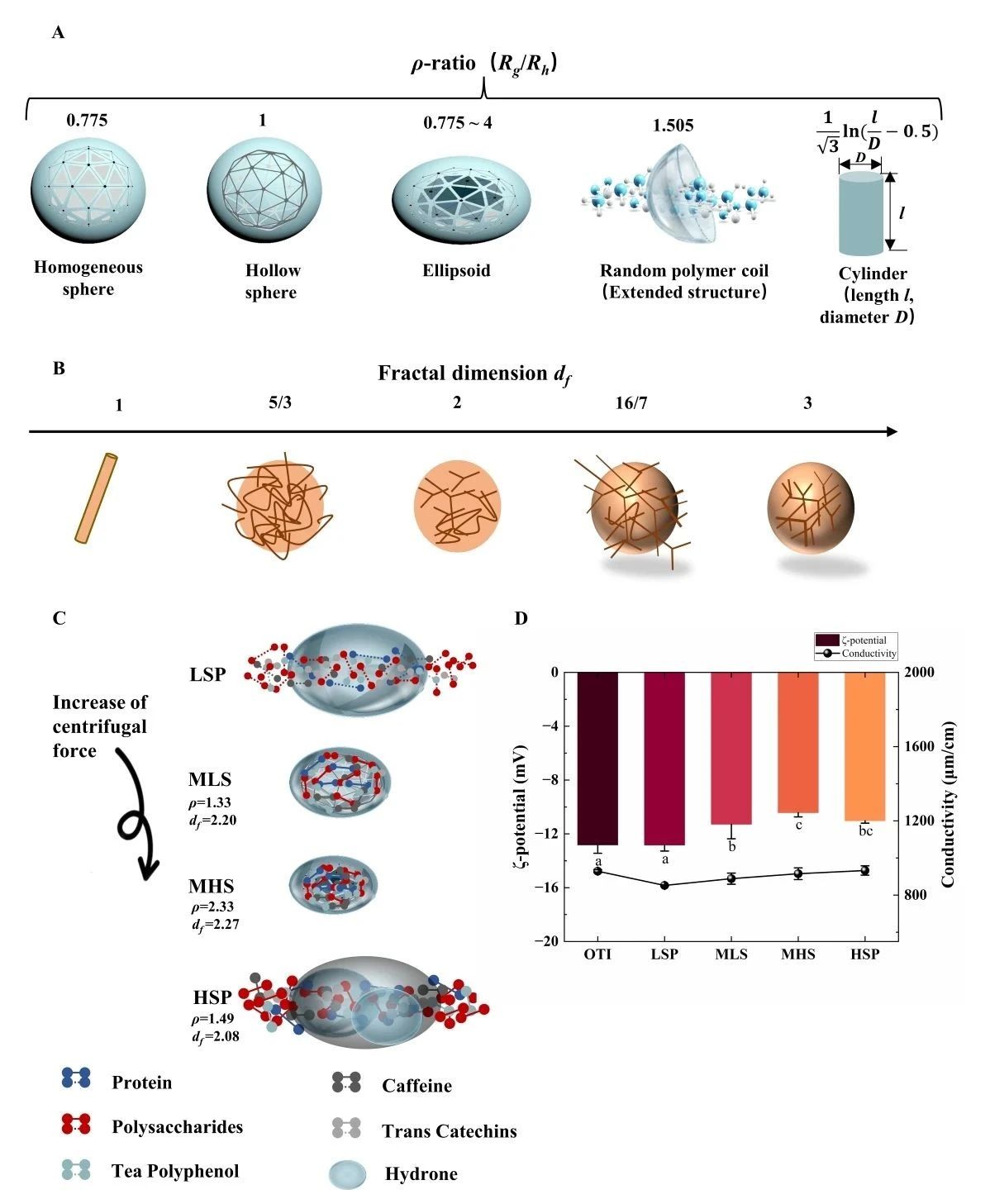
▲ (A) 颗粒形态对离心速度、回转半径(Rg)和流体动力学半径(Rh)的依赖关系示意图;(B) 几何结构及其分形维数(df);(C) 不同离心条件下Tea-NPs结构的示意图;(D) 离心速度对颗粒ζ电位和电导率的影响
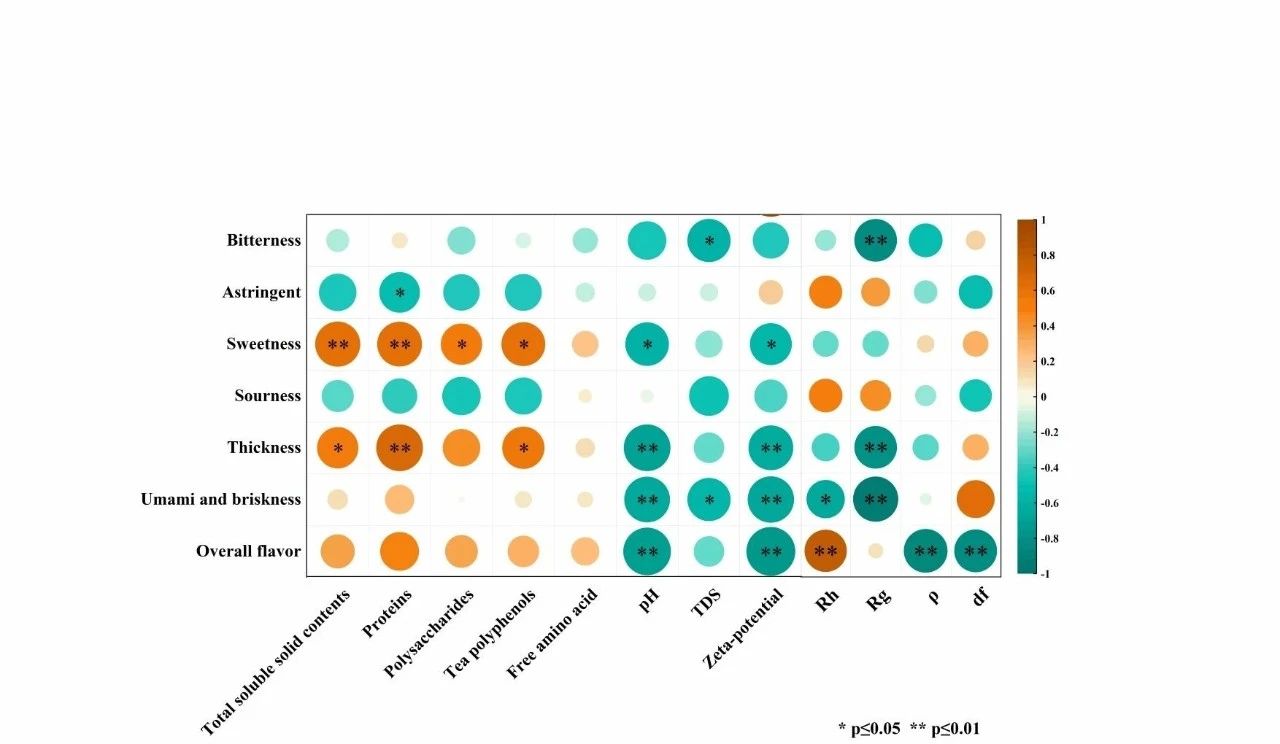
▲ 茶汤感官品质与其主要理化成分和物理性质的相关性分析
导读
本文于近日由中国农业科学院茶叶研究所茶深加工与综合利用团队尹军峰课题组在线发表于LWT-FOOD SCI TECHNOL。本研究以祁门红茶浸出液为模型体系,通过差速离心,结合化学分析、感官评价及光散射技术,考察颗粒在茶汤中的光散射行为,分析颗粒的大小、分布和结构特性,旨在构建茶汤化学成分、茶纳米颗粒(Tea-NPs)特性与茶汤滋味的内在关联。结果表明,红茶茶汤胶体颗粒由蛋白质、多糖和茶多酚的混合物组成,Tea-NPs的流体力学半径(Rh)范围为100-250nm,并呈负表面电荷(-10至-13 mV)。回转半径(Rg)和zeta电位分析表明,离心处理可诱导Tea-NPs发生结构性改变,包括颗粒尺寸、形状与致密性。高速离心促进Tea-NPs中多糖等组分的释放,颗粒紧实度和聚集状态的变化,进一步改变Tea-NPs的结构,导致Rh增大,苦味降低,同时提升整体风味。Tea-NPs的存在为解析各种离心条件下的感官评估差异提供理论参考。蛋白质和多糖是构成Tea-NPs的关键成分,在Tea-NPs形成过程中起重要作用。茶汤成分、理化性质和结构特性与感官属性间存在一些相关性。本研究中可为通过调控茶汤加工过程来改变其成分或结构,进而设计出具有特定感官属性的茶汤提供理论指导。本研究揭示了Tea-NPs在茶叶品质评价中的重要作用,并为茶产品质量提升策略提供了科学依据。
END
审稿:中国茶叶学会科普工作委员会主任委员、浙江大学茶叶研究所所长 王岳飞教授
来源: 中国茶叶学会
内容资源由项目单位提供


 科普中国公众号
科普中国公众号
 科普中国微博
科普中国微博

 帮助
帮助
 中国茶叶学会
中国茶叶学会 
